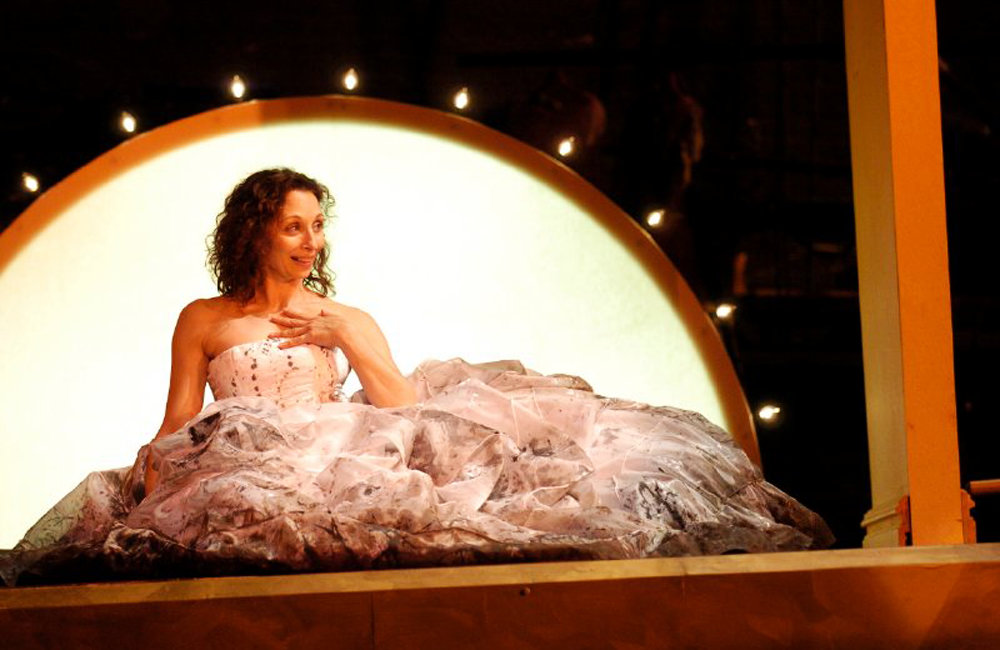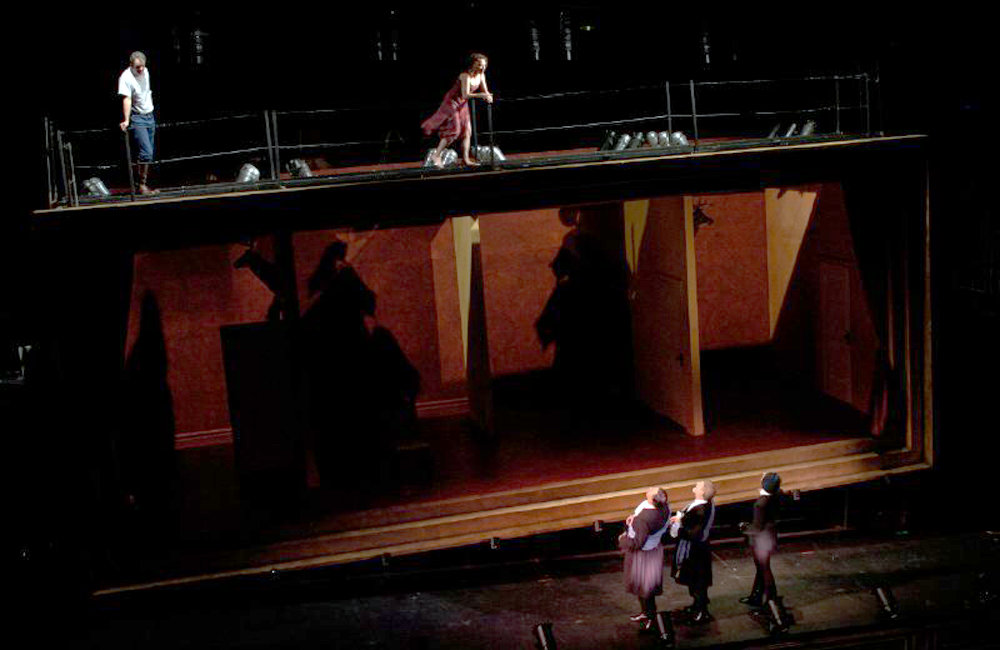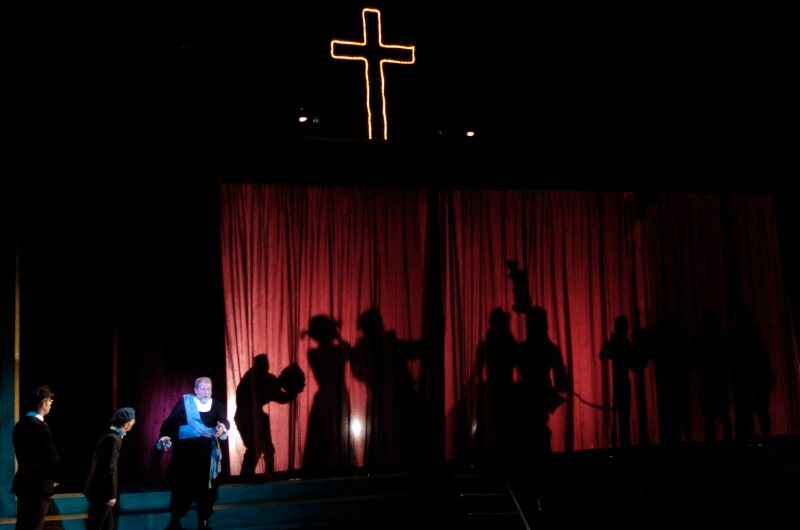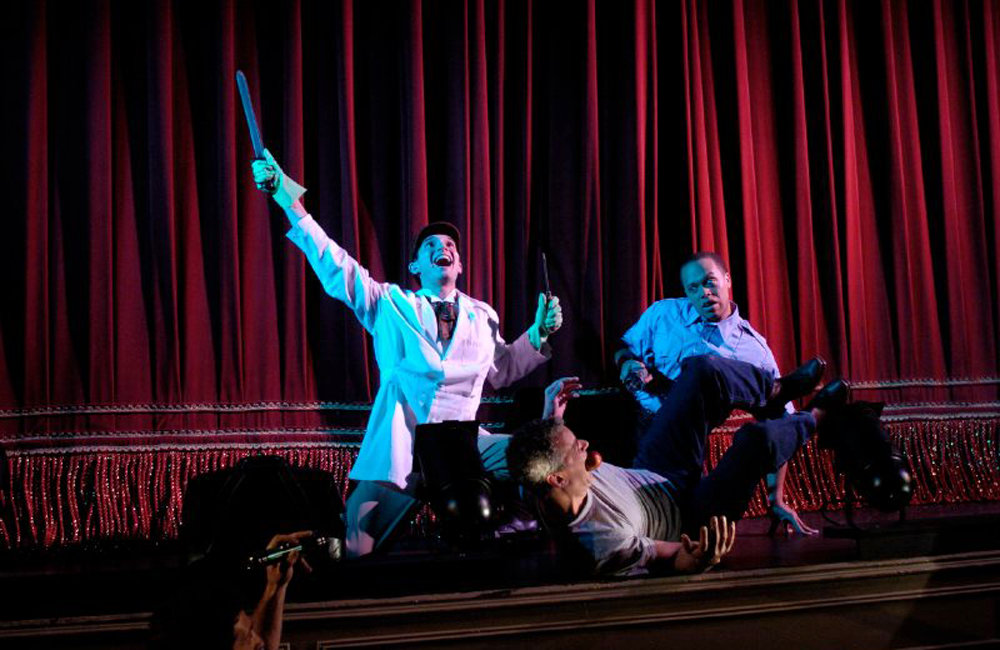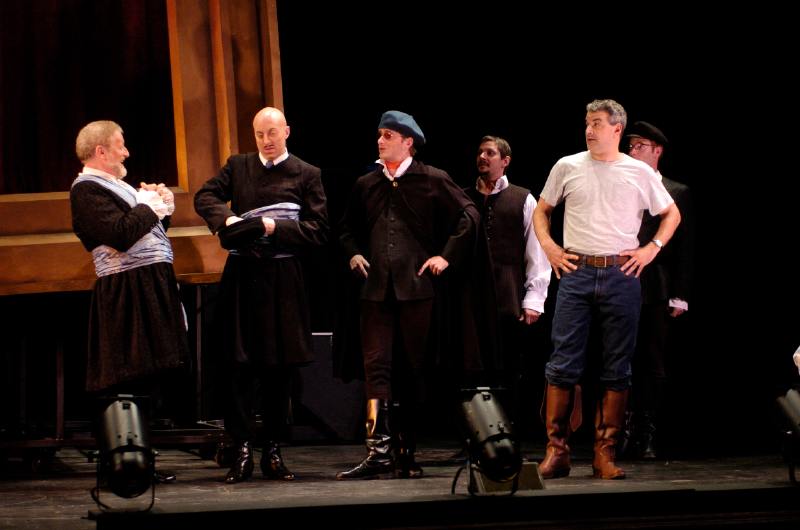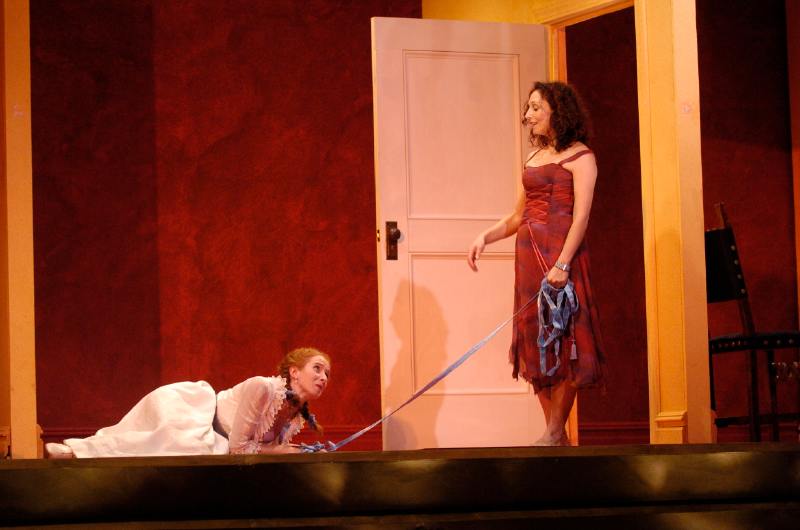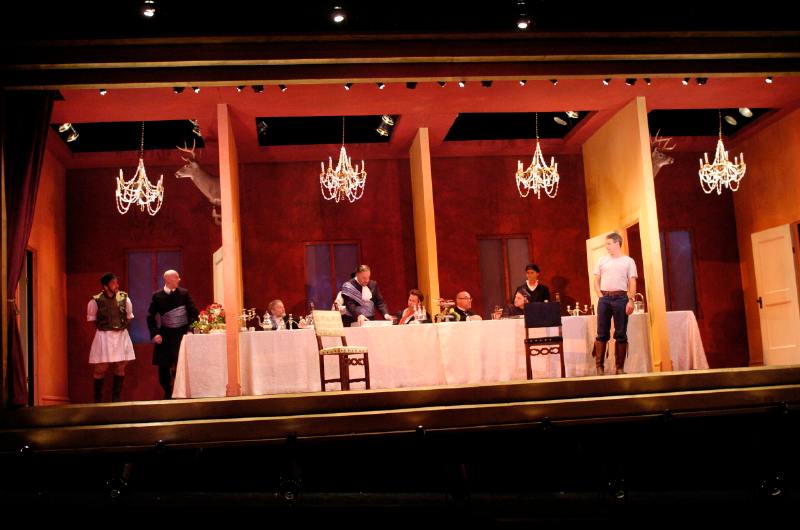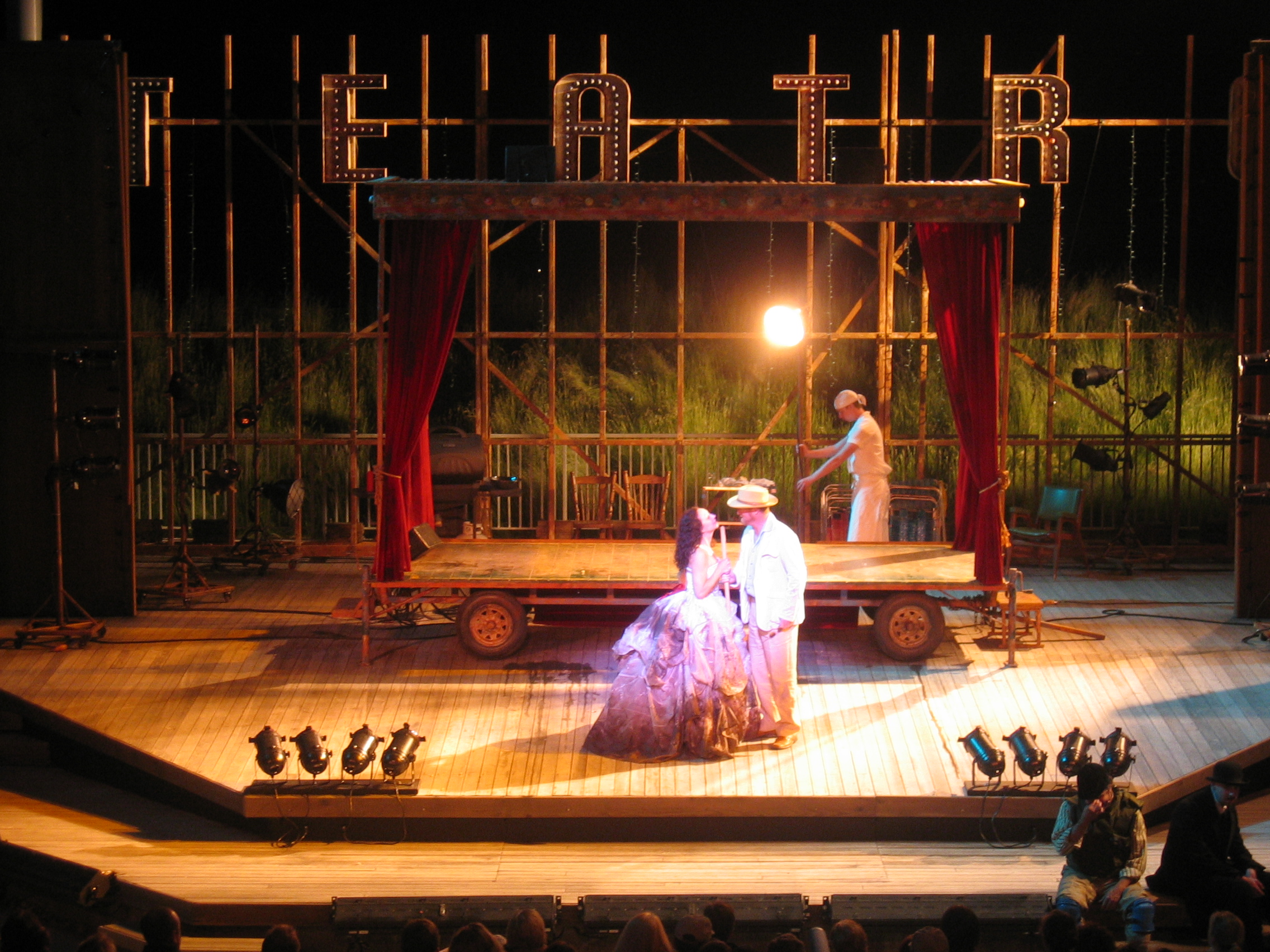THE TAMING OF THE SHREW
Set Design: Narelle Sissons | Lighting Design: Rick Martin
Costume Design: Kim Krumm Sorenson | Sound Design: Peter John Still
Scroll down to read Drew's director's note for The Taming of the Shrew at Great Lakes Theater and Idaho Shakespeare Festival.
The Taming of the Shrew by William Shakespeare| Director's Note
I used to think I hated The Taming of the Shrew. My negative first impression of the play, conceived in high school English class, hardened into fierce dislike while acting in it at a shall-remain-nameless summer Shakespeare Festival. There, I came to associate The Taming of the Shrew with everything that can be bad about the Bard: chiefly, actors nudging, winking and mugging in a ‘ye-olde-Shakespearean-style’. The specific ideas and events of the play, whether because of their historical remoteness or downright unacceptability to a contemporary audience, get glossed over by spirit of generalized a The kind of production where differences between the Elizabethean world of the play’s creation and that of contemporary audiences get brushed under a rug of generalized high spirits, demonstrating an inordinate trust in the universality of the classics. The question of how to unlock these plays from their historical context… (Shakespeare gives us some clues?) and characters wend their way through rote speeches that have long since lost any of their spontaneous humor or immediacy of thought. So, I approached the play with a good deal of trepidation when Charlie asked me to consider it for production.
I could easily call to mind the familiar stock characters (feisty wench, swaggering brute, sweet young lovers, doddering pantaloon and beleaguered patriarch). I braced myself for the age-old battle of the sexes that could have been called a draw long ago. Imagine my surprise when I discovered instead a play of dazzling invention and dizzying complication, overstuffed with unpredictable characters and plot as if its young playwright were trying out every tool in a newly acquired kit. Combining a traditional English genre of wife-taming folk tales with the more fashionable intricacies of newly translated Italian comedies, Shakespeare deftly strings together a twisting, turning storyline with characters that reinvent themselves at the drop of a hat. Even more intriguingly, he establishes the seemingly impossible conversion of the wild Katherina into a domesticated Kate as part of a theatrical performance for an unsuspecting and potentially unresponsive audience – the drunken tinker, Christopher Sly. It’s a play about playing, in which the play within the play completes a nonsensical practical joke.
As I so often find with Shakespeare’s works, what I assume I know about a play is but a molehill compared to the mountain of new information just waiting to reveal itself to me. And The Taming of the Shrew seems to take particular delight in confounding any attempts to ever fully know it. Shakespeare dares us to think we really know who’s who and what’s what in the make-believe world of Padua.
The series of disguises, deceptions and mistaken identities all serve to underscore the power of performance and the degree to which role playing factors so heavily in social behavior. We are all starring actors in our own lives and supporting characters, if not bit players, in the lives of others. We’re always in the process of auditioning friends and potential loved ones, looking to expand or diminish the cast that surrounds us. One person’s shrew is another’s partner in crime. Kate, Petruchio and the rest are players, fictions brought to life by Shakespeare’s language and our imaginations. Their reality is as much an illusion as Christopher Sly’s lordliness. It is perhaps a cautionary tale: advising us against aligning ourselves too firmly with either side. I’d advise against taking any sides in The Taming of the Shrew; you might just find the joke’s on you.
-Drew Barr
